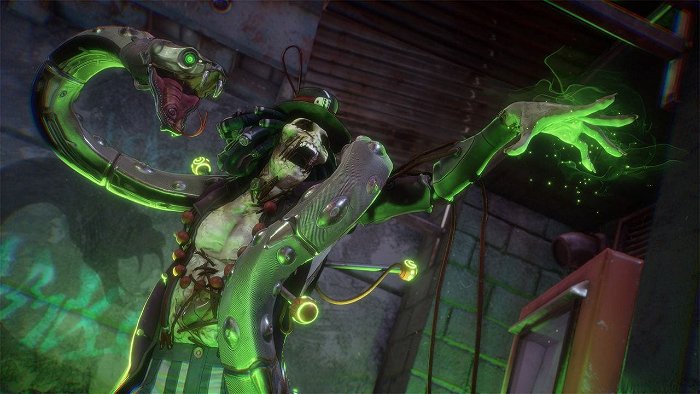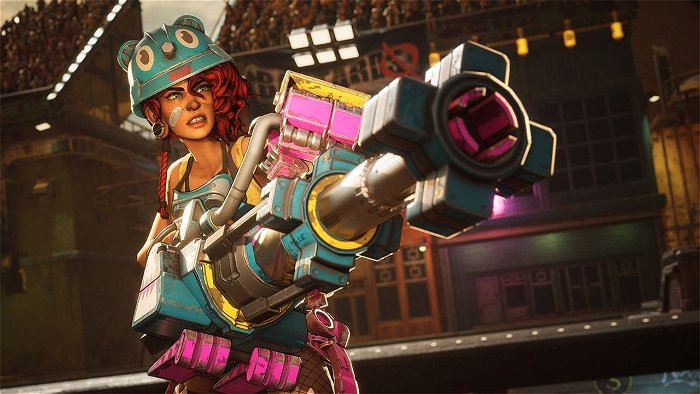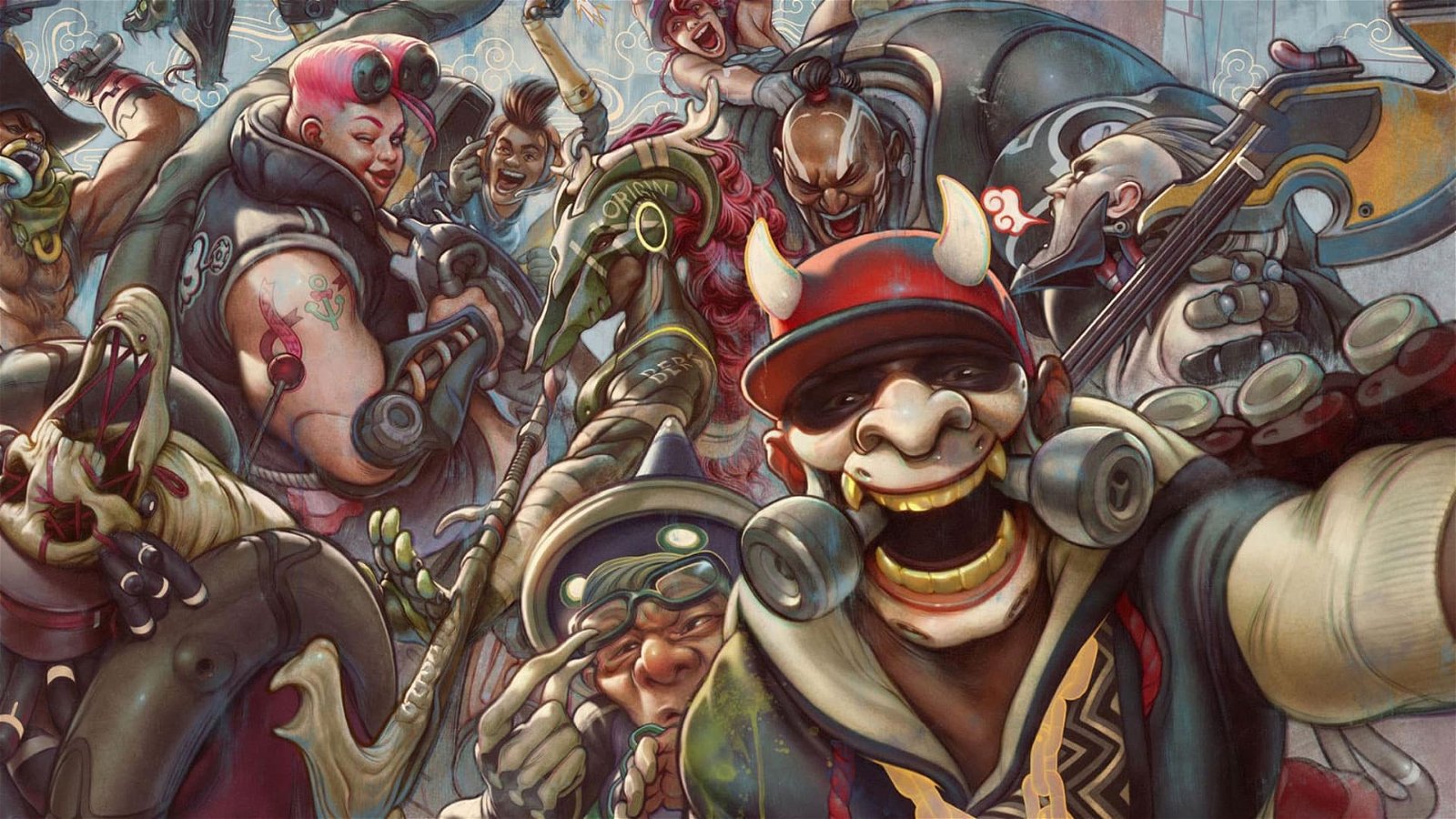Ninja Theory has built a reputation for crafting some of the most interesting games in the industry.
The small studio has given the world Heavenly Sword, DMC, and most recently Hellblade. Now the studio is in the hands of Microsoft, and they have a new game called Bleeding Edge that is looking to shake up the competitive scene in exciting ways.
Set in a Cyberpunk inspired future, extreme body hackers work to push the limits on what is possible with the human body. As they enhance their bodies, they also take to the streets to test out what they can do in a team deathmatch that will push their limits. The game captures a frenetic pace while still keeping the tight controls people have come to expect from Ninja Theory. At E3 2019, CGMagazine had a chance to talk to Rahni Tucker, the creative director at Ninja Theory, about the game and how it got started, along with what people can expect when they finally jump in.
CGMagazine: Let’s start off with how this game came to be?
Rahni Tucker: I think Ninja Theory always had a bit of a combat DNA. I came to the studio because I liked the look of Heavenly Sword, I worked on DMC as a combat designer, and after finishing that I wanted to work on more third-person action combat. I really like working on the touch and feel of the controls. Working with animators, choreography of the moves…that’s kind of my jam at work and what I get satisfaction from. At home I’m playing competitive team based games all the time, like everything there is.
So I’m like, “Well, where is this game? Where’s competitive team multiplayer meets third person action combat?” That doesn’t really exist. And I didn’t know why, because I thought it was an obvious idea. I pitched it to Ninja, but at the time we didn’t have the resources to make it. Then around three-and-a-half years ago, about halfway through Hellblade, the indie AAA thing was going quite well. My team freed up—my other small team at the time was only about 15 people, something like that—and they said, “Hey, you know that game that you pitched? Do you still want to make it?” I was like, “Hell yeah.” So we started.

CGMagazine: How did the team at Ninja Theory come up with the visual style at play in Bleeding Edge?
Rahni Tucker: Okay, so the visual style itself—in terms the way it’s shaped and looks—was very inspired by anime graphic novels. Both myself and the art director have quite similar taste. Stuff like Akira, Ghost in the Shell, there’s an art book that my art director loves called Cannabis Works that was a strong inspiration. Our brilliant concept artist has a lot to do with that as well. He drew that [Rahni points to concept art on the wall] for example. So that’s where the art style came from.
I read a lot of sci-fi, and basically, it’s inspired by my taste in novels. Authors like Neal Stephenson and Alastair Reynolds are probably a couple of my favourite novelists. That setting really suits me. The characters themselves all start off as a really simple idea, like, black metal guitarist, okay. If I’m a black metal guitarist, 50 years in the future, and I’m an extreme body hacker, what would I do? Then we get a little team into a room and we’re all throwing ideas and the ideas are coming from concept artists and designers and animators and character artists. Everyone’s coming from a slightly different perspective. So you end up with this real interesting mix of ideas coming from everywhere.
CGMagazine: I want to quickly touch on the numerous elements of the game, from the hover boards to the way the control points work. How did you as a team figure out what worked and what didn’t work? How much iteration has gone forward, from its inception stage to now?
Rahni Tucker: Absolutely tons of iteration. We spent the first half of the project prototyping. At the start, all I knew was that it had to be third-person action and had to be team multiplayer. Those are the only two things that had to be. And then we’re like, “Okay, well, we don’t know what that means yet.” We don’t know if that means 3v3, 6v6, is it objective based, are there minions, and towers have big of the maps, what abilities do you have? What combo? Are there two combo buttons? One combo button and one special? So we just started prototyping and trying ideas. We took influence from the games that we like to play and the stuff that we like as a team. We tried it out, and we found what works and we threw away what didn’t.

CGMagazine: Do you see the cast of characters expanding as you get up to release and after?
Rahni Tucker: I haven’t really thought about adding archetypes. Mostly they’re there to help players find the type of thing they would like to play, if that makes sense. Zero Cool, for example, is a support, but he’s probably one of the most damaging of the support. So if you want to, you can use mods to skew him even more into damage, and then you can play him almost like an assassin. And the same is true for another character who is a heavy, but again, he’s more of a bruiser so he crosses over into damage a little bit. Makutu is a tank, but he crosses a little bit into support, because he can offer a little bit of healing to those around him and, and so forth. I think at the end of the day, each of the fighters is completely unique.
CGMagazine: Why the choice for the control points to spawn and change as Bleeding Edge goes on?
Rahni Tucker: We wanted to be able to control the flow of the fights in a match a little bit. So when objectives update, it’s a big team fight. Everybody’s in there, there’s a certain strategy and synergy that occurs when you’re doing a 4V5 fight. It’s fun, it’s hectic. It’s very fast, it’s full on. When there are three objectives active, you have to decide whether to split up and to send people over there or one person tries to sneak around. You have the opportunity to have 1V1 and 2V2, or 2V1 or whatever. I think that’s a nice mix of combat over the course of a match, not just having a team fight all match.
CGMagazine: What audience are you targeting for Bleeding Edge?
Rahni Tucker: To be entirely honest, when we made it, I was targeting me. We don’t think that way at Ninja. We don’t sit down and try to target that particular market or whatever. It’s more the concept that I have an idea that I’m passionate about. I feel like if you’re passionate about something, and you can find a team that’s passionate about it and you make it with passion, then hopefully when you put it out there, there’s going to be an audience. Part of the technical offer is finding out who likes this game? Where are they and how do we how do we find them? I’m hoping that there will be an array of different people that this could appeal to, such as fighting game fans, third-person hack and slash players, people that play online arena games of any genre—whether that be stuff like battle royale or class-based shooters or MOBAs—and then casual gamers that are playing stuff like Rocket League. Hopefully, there’s a nice mix of people that Bleeding Edge will appeal to go.

CGMagazine: How did you guys come up with the different range of characters you have in place?
Rahni Tucker: They all came in different ways. So some of the fighters came from a bit of concept or a sketch, and some came from an animator having an idea and gathering a mood board of reference and going, “What about a character like this?” Some were total design prototypes that had that no dressing, it was just a block that moved around and cast abilities because we felt like a specific gameplay style was missing front the game. They’re coming from all these different places, and they’re seeding from different departments. I think that’s part of what makes them so different from each other.
CGMagazine: What character did you start with when building Bleeding Edge?
Rahni Tucker: We did Buttercup first, she was the very first character. At the beginning we were trying to find something that we can put down that represents what we’re trying to do. We had a bunch of different character ideas that we were refining and playing around with, but Buttercup was the first one where we were really happy and we thought that nailed it. She depicted the essence of what we want our game be.




